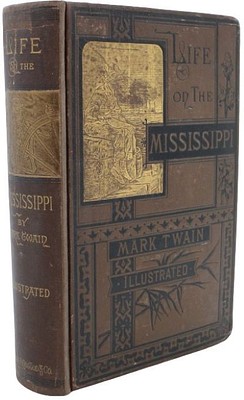Revolutionary War Map 1776
About Seller
522 South Pineapple Avenue
Sarasota, FL 34236
United States
Sarasota Estate Auction specializes in a wide variety of furniture, antiques, fine art, lighting, sculptures, and collectibles. Andrew Ford, owner and operator of the company, has a passion for finding the best pieces of art and antiques and sharing those finds with the Gulf Coast of Florida.
Two ways to bid:
- Leave a max absentee bid and the platform will bid on your behalf up to your maximum bid during the live auction.
- Bid live during the auction and your bids will be submitted real-time to the auctioneer.
Bid Increments
| Price | Bid Increment |
|---|---|
| $0 | $10 |
| $100 | $25 |
| $250 | $50 |
| $1,000 | $100 |
| $2,500 | $250 |
| $7,500 | $500 |
| $20,000 | $1,000 |
| $50,000 | $2,500 |
| $100,000 | $5,000 |
| $250,000 | $10,000 |
About Auction
Aug 5, 2023
Featuring a Lifetime Collection of Early American Pottery, a Fantastic Georg Jensen Sterling Tea Set - 23 OZT, Important Books and Ephemera, and Exquisite Estate Jewelry. Also including art from artists including Roy Lichtenstein, Camille Pissarro, Karel Appel, Victor Vasarely, and many more. Sarasota Estate Auction sarasotaestateauction@gmail.com
- Lot Description
A copperplate engraving of a map titled “Sketch of the Country Illustrating the late Engagement in Long Island”, which is a Revolutionary War map featuring Long Island and the site of the Battle of White Plains in New York in 1776. If you look closely, you can see small rectangles on the map which represent units from Washington’s military forces in their battle against the British, and the map covers a pivotal time during the war. The British had placed General William Howe in charge of the greatest army England had ever sent overseas, forces far superior to any the Americans could put on the field. In June 1776, a large British war fleet led by Howe sailed into New York harbor and a month later an army of 10,000 men landed on Staten Island, unopposed by the Americans. During July and August British reinforcements continued to build up until Howe was in command of a force of 32,000 men, including German mercenaries, and in the final days of August, Howe inflicted a crushing defeat on Washington's army. To escape the onslaught, Washington withdrew his forces from Brooklyn Heights to Manhattan. Less than two weeks later, he decided to evacuate New York City rather than be trapped in lower Manhattan, but before he withdrew from the city, Washington prepared fortifications in upper Manhattan and was able to repulse the British army in the Battle of Harlem Heights. In October, with British forces advancing, Washington evacuated his main force from Manhattan Island, leaving behind a garrison at Fort Washington, and marched to White Plains, but in the Battle of White Plains, the British inflicted heavy casualties on Washington's army again; luckily Washington slipped away westward to North Castle in November, 1776. Two weeks later the British forces under Gen. Howe captured the American garrison at Fort Washington, taking more than 2800 prisoners. After deciding to abandon the New York area, Washington moved his forces across the Hudson River and into New Jersey. Joined by General Nathaniel Greene's troops at Hackensack, they retreated together toward the Delaware River with General Cornwallis at their heels. The map was published in London in The Gentleman’s Magazine in October 1776 and it was probably a propaganda map for the British - it was still early in the Revolutionary War and the British had something to crow about because of the defeat of Washington in New York - and you can see the uneven edges on the left margin of the map where the map had been removed from the magazine - the other edges are clean cut. This is the first state of the map, issued in October of 1776, pre-dating the inclusion of the battle of White Plains (consequently the second state has a different title). The map features New Jersey, Staten Island, and Long Island, and covers the New York region from Amboy, New Jersey on the southwest to Suffolk County on the east and Westchester County in New York on the north. It’s done in black and white and has two vertical folds, as called for, to fit in the magazine. The map measures 8 1/4 in. high and 13 in. wide, from margin to margin, with light creases along the margins and a brown spot near Suffolk and Hampton Plains on the right side of the map, and an important Revolutionary War map that could have forecast doom for the Americans in the Revolutionary Warm, but it didn’t - two months later, Washington had a stunning victory over the Hessians at the Battle of Trenton in New Jersey and stemmed the advance of the British after such heavy losses in New York.
- Shipping Info
-
SHIPPING INFORMATION·
Sarasota Estate Auction IS NOT RESPONSIBLE FOR SHIPPING. All shipping will be handled by the winning bidder. Sarasota Estate Auction recommends obtaining shipping quotes before bidding on any items in our auctions. If you are interested in obtaining any information on local shippers, please send us an email and we will kindly send you a list of local shippers. Refunds are not offered under any circumstances base on shipping issues, this is up to the buyer to arrange this beforehand.
Premier Shipping, info@premiershipment.com
-
- Payment & Auction Policies
-
Available payment options
We accept all major credit cards, wire transfers, money orders, checks and PayPal. Please give us a call at (941) 359-8700 or email us at SarasotaEstateAuction@gmail.com to take care of your payments.
-
- Buyer's Premium



 EUR
EUR CAD
CAD AUD
AUD GBP
GBP MXN
MXN HKD
HKD CNY
CNY MYR
MYR SEK
SEK SGD
SGD CHF
CHF THB
THB























